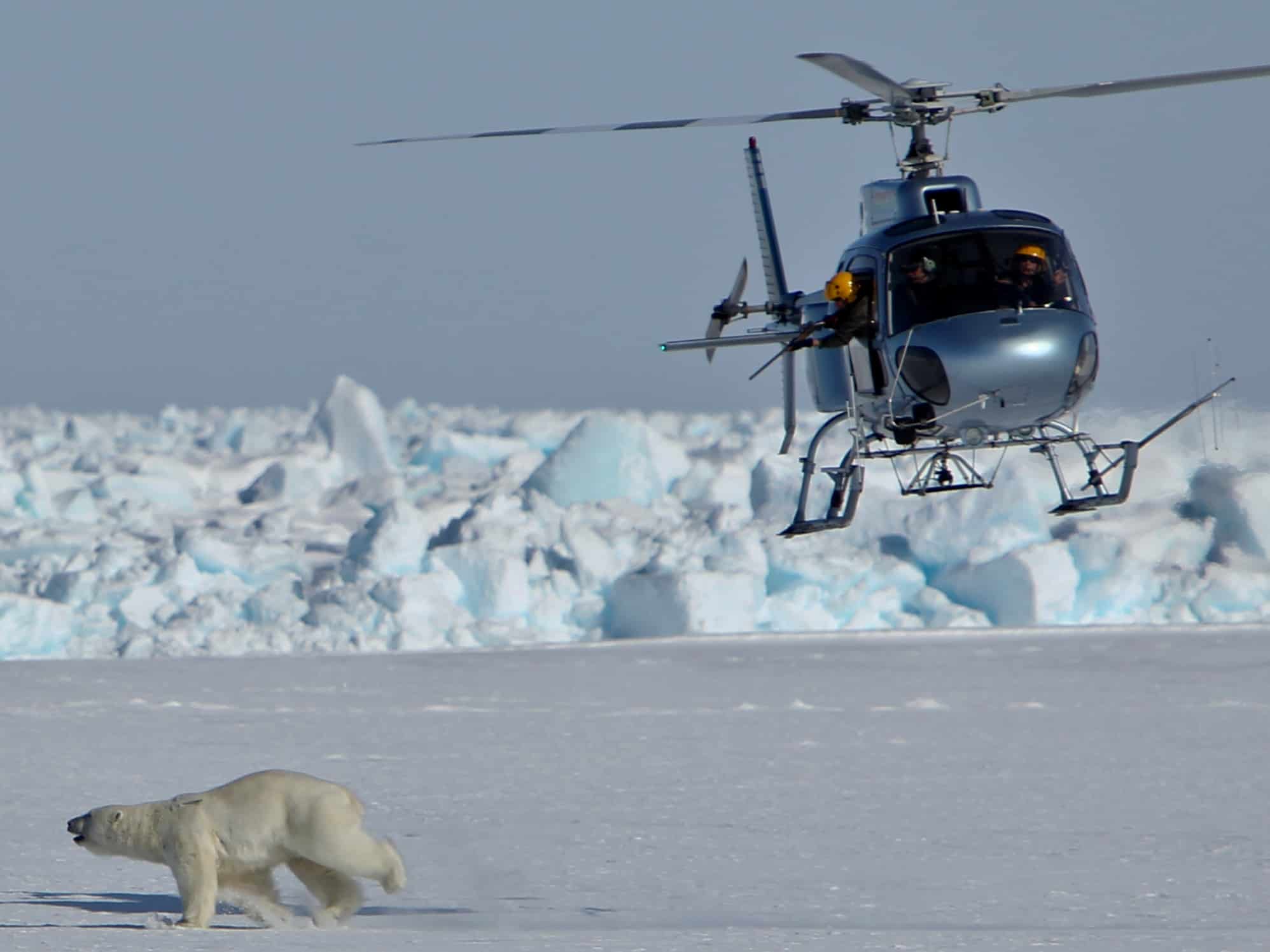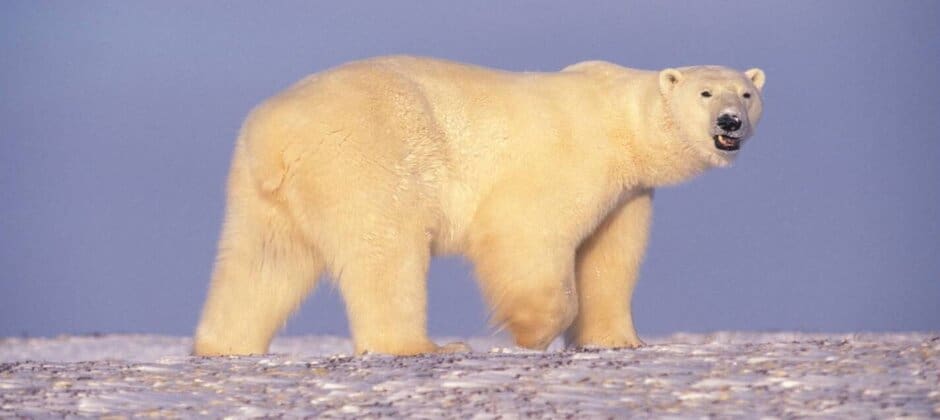Share this article
JWM: Helicopter capture doesn’t unduly stress polar bears
The heavy fog was coming in fast as John Whiteman and his colleagues worked to measure an adult female polar bear north of the Alaskan coast. They had shot the bear with a tranquilizer dart from a helicopter as it crossed sea ice with its two cubs. The researchers quickly got to work taking blood samples and measurements—if the fog got too thick, the helicopter could be grounded, unable to make it back to the icebreaker ship where they were based.
“When you lose visibility, if you’re working on the sea ice, suddenly you can’t take off,” said Whiteman, an assistant professor at Old Dominion University in Virginia who was part of the research team.
The situation was stressful for the researchers, who faced the prospect of spending the night on frozen Beaufort Sea ice with a tranquilized bear and its cubs. The Telazol they used to sedate the mother bear only lasts about 45 minutes, so the researchers would have to keep administering more doses to keep themselves safe.
Luckily, Whiteman and his colleagues finished their work and got out of the area just before the fog reached them. They were conducting a long-term study of the physiology and ecology of polar bears (Ursus maritimus). They usually removed the data recorded during the actual capture process, since they consider the bears were probably affected by the stress of running away from the helicopter during capture. Sometimes the whole process, including the researchers’ first sighting to the moment a bear falls to the ground under the effects of the tranquilizer, could last 45 minutes.
Some northern communities and others have raised concerns about the safety of this form of research for the bears. “You can just look at the capture event and know it’s a very intense event for the bear,” Whiteman said. He and his colleagues predicted this would be more stressful than anything they experienced in their lives naturally.
In a study published recently in the Journal of Wildlife Management, Whiteman decided to examine the data they collected on the stress polar bears experience. Many of the bears tracked for other studies had surgically implanted devices that logged their body temperatures and activity levels. The blood samples revealed the levels of cortisol, a hormone associated with stress, as well as other blood variables.

A polar bear is captured on the frozen Beaufort Sea in 2010. Credit: Mike Lockhart
The team analyzed data from 66 bear captures for 50 total bears (a few were captured multiple times), in operations in 2008 and 2009. They input the data they gathered into models that predicted the level of stress the bears experienced based on the duration of the helicopter capture and the dose of the sedation drug.
As far as abdominal temperatures from the temperature loggers, the researchers only found one bear out of the six they looked at for this factor had a higher temperature from a helicopter capture than from natural events. The other five logged higher temperatures from natural behavior. They also had similar findings with the peripheral temperature and activity levels of bears—most were within the range they experienced from natural events.
While polar bears may sit at the top of their food web, they can still experience stress from fights with other polar bears, walruses (Odobenus rosmarus) or even large bearded seals (Erignathus barbatus). Polar bears have even been witnessed jumping into holes in the ice to try to catch beluga whales (Delphinapterus leucas) trapped far from open water. Some of the bears that Whiteman and his colleagues trapped were covered in nasty scars from previous battles.
“Polar bears do some things that are really intense,” Whiteman said. But, “helicopter captures induced levels within range of the most extreme natural behavior.”
The researchers also modeled the levels of cortisol and eight other blood variables for the bears, but they couldn’t tell much difference between natural events and helicopter captures other than a temporary change in the composition of white blood cells that isn’t full understood. They didn’t find any relation at all between longer chases and high cortisol levels.
Whiteman said that revealing how much these events stress bears in relation to natural behavior is important for future research on the large predators. This kind of analysis has hit a number of roadblocks in recent years due to concerns about the impact on the health of the research subjects themselves. But Whiteman said it’s difficult to manage bears for the best conservation outcomes without these kinds of studies.
“Because polar bear ecology is entirely based around sea ice, their management is inherently tied to climate change and ice loss,” he said. “And unfortunately, any void in our understanding of polar bear ecology thus tends to be filled by climate change misinformation.”
This article features research that was published in a TWS peer-reviewed journal. Individual online access to all TWS journal articles is a benefit of membership. Join TWS now to read the latest in wildlife research.
Header Image:
Using helicopters and tranquilization as a technique to study polar bears doesn't stress the animals.
Credit: Terry Debruyne/USFWS








